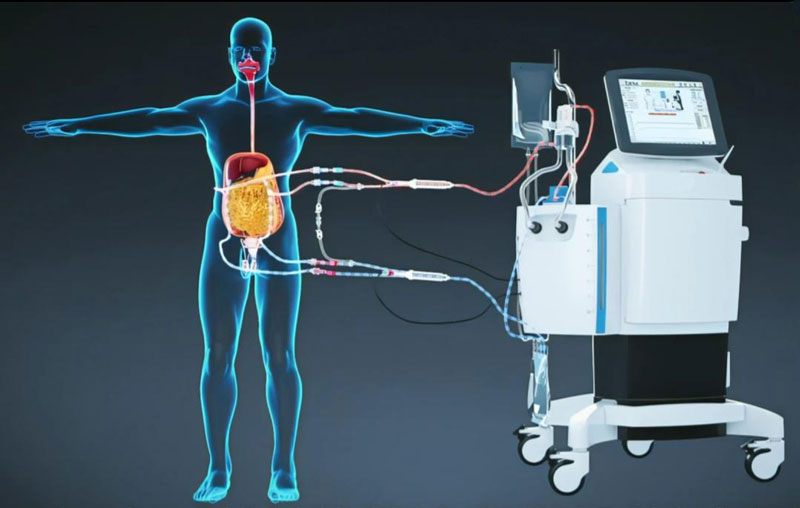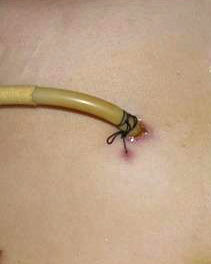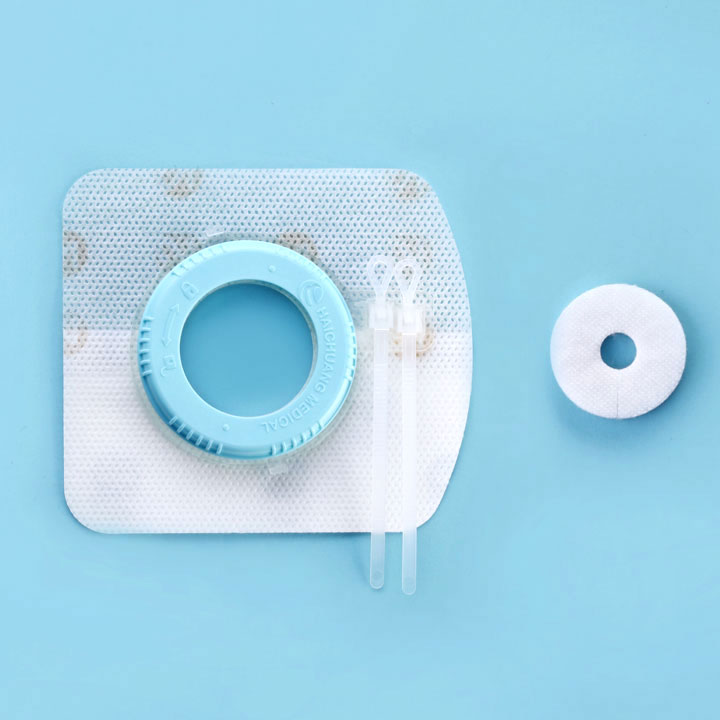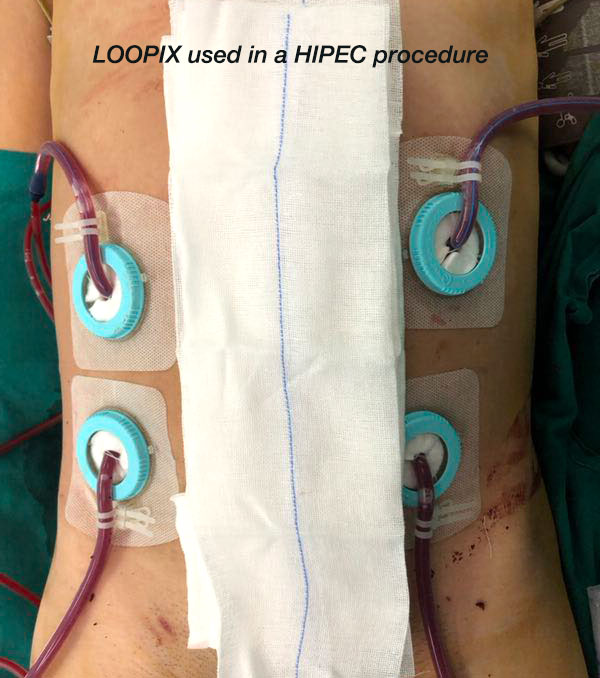Hyperthermic Intraperitoneal Chemotherapy (HIPEC), as an emerging adjuvant surgical procedure for abdominal cancers, has brought new hope to patients with abdominal tumors. After removing the visible tumor, the surgeon passes 4 catheters through the patient’s abdomen and pumps a large dose of perfusate containing heated chemotherapy drugs to circulate the perfusion to fill the abdominal cavity and maintain it for a period of time to kill the remaining cancer cells after surgery and reduce the risk of cancer recurrence.
HIPEC has great advantages. However, in actual clinical treatment, there are many potential issues and pain points in HIPEC catheter fixation. There are more catheters in HIPEC than in general surgical wound drainage, so there are higher requirements for the fixation of the catheters, and they cannot be dislodged, blocked, or leaked. Compared with the traditional suture fixation method, the LOOPIX Wound Drainage Tube Fixing Device from Haichuang Medical can better solve the problems of catheter fixation in HIPEC treatment.
How Does HIPEC Work?
The role of intraperitoneal chemotherapy is to maximize tumorpenetration and optimize cell death while minimizing systemic toxicity. HIPEC procedure steps main include:
HIPEC perfusion: HIPEC can generally be divided into 3 times. The first time is immediately after cytoreductive surgery. In addition, two times of hyperthermic intraperitoneal chemotherapy can be given within one week after surgery, each time for about one hour (the time can be determined according to the type of cancer).
Heating: The temperature of the heated chemotherapy solution is kept at about 42 degrees Celsius. It enhances the effectiveness of the chemotherapy solution, increases the penetration of the solution into the tumor tissue, and helps destroy any possible residual cancer cells that are not visible to the naked eye.
Perfusion and exposure: The heated chemotherapy solution is continuously circulated in the abdominal cavity for a certain period of time (maybe 60 or 90 minutes), which can different according to the protocol and the type of cancer being treated, and the details need to be consulted with the attending physician.
Drainage: After HIPEC treatment, the remaining chemotherapy solution in the abdominal cavity is drained out, and the abdomen is rinsed with normal saline before the incision is sutured, and then sutured.
HIPEC is used to treat various types of abdominal cancer and is considered a specialized and aggressive treatment option, usually when the cancer is confined to the peritoneal cavity and has not spread widely to distant organs. Compared with traditional chemotherapy, chemotherapy drugs in HIPEC treatment will not circulate throughout the body, and the side effects are less.

What cancers does HIPEC treat?
The candidates are those who have been diagnosed with:
- Various abdominal cancers, including adrenal cancer, appendix cancer, colon cancer, rectal cancer, stomach cancer, liver cancer, ovarian cancer, pancreatic cancer, peritoneal cancer, and so on.
- Peritoneal metastasis of gastric cancer, colorectal cancer, cholangiocarcinoma, pancreatic cancer, ovarian cancer, endometrial cancer and other cancers
- Pseudomyxoma peritonei
- Malignant peritoneal mesothelioma
- Cancerous ascites
- Prevention of peritoneal seeding and metastasis after radical surgery for advanced gastric cancer, colorectal cancer, and cholangiocarcinoma that has invaded the serosa
Potential issues with HIPEC catheter fixation
Catheter fixation issues refer to any problems or complications that may arise with the positioning and fixation of the catheter during the HIPEC procedure. Proper securing of the catheter is critical to ensuring that the chemotherapy solution is evenly distributed throughout the abdomen and remains in place throughout treatment.
There are some potential problems that may arise with catheter fixation during HIPEC:
Dislodgment: If the catheter is not held securely in place, it may become dislodged during the procedure. This can lead to interruptions in chemotherapy delivery or uneven distribution of heated solutions.
Leakage: Improper fixation may result in leakage of chemotherapy solution from the catheter insertion site. This may result in lower intraperitoneal concentrations of chemotherapy drugs and may impair treatment efficacy.
Blockage of catheters: In some cases, problems with the catheter’s fixation can cause the catheter to become kinked or blocked, preventing the proper flow of chemotherapy solutions.
Infection: Poor catheter fixation increases the risk of catheter insertion site infection, which can be a serious complication.
To prevent catheter fixation problems during HIPEC, the surgical team takes special care to properly position and secure the catheter before beginning the procedure. They may use sutures, an adhesive dressing, or other securing methods to hold the catheter firmly in place. Haichuang Medical’s new catheter fixer LOOPIX wound drainage tube fixing device is a very good alternative.

LOOPIX’s ease of use, observation and adjustment help identify any potential issues with catheter fixation during HIPEC and enable the surgical team to address them in a timely manner. A proper fixation ensures effective delivery of chemotherapy solutions, maximizing their therapeutic effects and improving success in advanced abdominal cancer treatment.

What differences can LOOPIX make?
- Dual fixation of LOOPIX reduces the risk of drainage tube dislocation and accidental extubation to avoid the risks of dislodgement and leakage in the HIPEC procedure.
- LOOPIX replaces sutures to secure the HIPEC catheters, relieving the patients’ pain and improving comfort.
- Skin-friendly and strong and long-lasting adhesion of LOOPIX minimize the risks of HIPEC procedure.
- LOOPIX reduces the burden on nurses and family members. Compared with sutures, LOOPIX can be used with more confidence, and there is no need to worry about the risk of dislodgment and extubation all the time.
- Adjustable key design of LOOPIX will help doctors adjust and relocate the tube without reopening or touching the incisions. LOOPIX offers workable and better remedial measures while the above risks happen.

For more details, please visit the product page Dispositivo di fissaggio per tubi di drenaggio LOOPIX.
